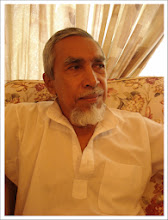1. His time as a young man had gone a very,
very long time ago. It’s a shame that facts and figures pertaining to his teens
might have been buried with the passage of time.
2. I’m so curious about his education. According
to a report
he was a promising young student at Penang Free School and was in the Queen’s Scholarship class, but his uncle “would not allow him to proceed to England
even if he should win such a scholarship.” So he had to give up his study for
the Queen’s Scholarship examination.
3. The report stated that after leaving school
he joined the tutorial staff of his alma mater. He’d made it in studies for sure, but how well he fared would
remain unanswered indefinitely.
4. He taught for several years until he became senior assistant master. According
to reports in local papers he was a popular teacher. It was during his time as
a teacher that his name appeared in the List of Qualified Juror, Penang, 1904: Mahomed Ismail Merican, schoolmaster,
Free School; Farquhar Street.
5. I’d heard rumours that his achievements as a
government servant were attributed to his love of reading hence learning and not
to any qualifications of which he had none. I believe his mastery of the
English language had turned him into a highly articulate person leading to his
appointment as high court registrar and later as assistant legal adviser. He
was legal adviser and public prosecutor during the war.
6. In her book The Chulia in
Penang, Khoo Salma
Nasution cited an article on “datuk keramat” to relate about early Tamil sufi
pioneers on Penang island. The writer of the article wrote under the initial
MIM which according to Khoo Salma belonged to Mohamed Ismail Merican.
7. Some time ago upon meeting her at Areca
Books store, I asked her how certain were she that the initial belonged to my
father. She replied she was 99 per cent sure.
8. I’ve a feeling that that wasn’t the only
article he’d ever written. To date our search for other pieces by MIM hasn’t
borne any fruit. If we ever get hold of his writings we’d ultimately cherish
them and do them justice.
9. Much about his migration to Alor Star as well as his marriages would remain as enigmas to us all. We would never learn
the underlying factors that triggered off both events. We may only speculate
about what had happened but may never learn the truth.
10. Lastly, according to the above mentioned report
he took up private business after retirement. It seemed that to the last he was
attached to a legal firm in Alor Star. It would be a great fulfilment if facts
and figures about his venture were to be found one of these days. So our search
continues...












